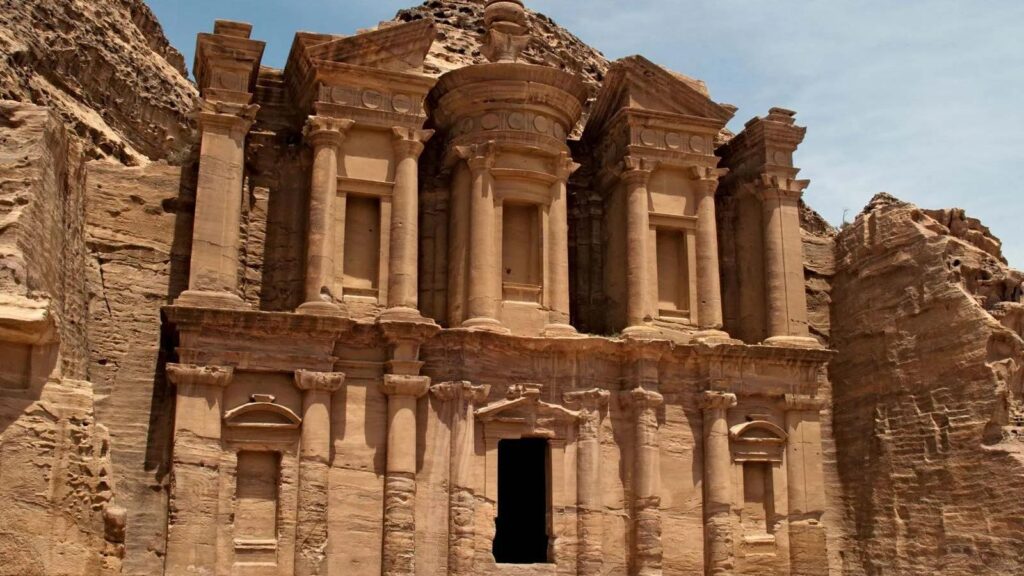When it comes to marvels that stand as a testament to human ingenuity, nothing quite compares to the architectural wonders of the world. They’re not just breathtaking landmarks, but also tell a tale of human civilization’s evolution, reflecting the pinnacle of creativity and innovation.
7 Architectural Wonders of The World
Stretching over 13,000 miles, the Great Wall of China stands as a testament to the Chinese empire’s ancient military defence systems. Its construction started around the 7th century BC, with most of the current wall dating back to the Ming dynasty (1368–1644).
From thrilling steep climbs to breathtaking views of the countryside, there’s no shortage of intrigue that the Great Wall offers. Spanning across deserts, grasslands, mountains, and plateaus, it showcases the splendour of China’s diverse landscapes. An engineering marvel, it’s an incredible testament to human ingenuity, perseverance, and the realisation of a vision on such a vast scale.
In creating the Great Wall, builders used whatever materials were available locally. In the plains, they used rammed earth, while in the mountains, they used stones. Over time, other materials, like bricks, tamped earth, wood, and other materials, were also used. Its pragmatic approach to architecture becomes evident when one considers this historical fact.
Petra, Jordan
Shifting focus from China’s mega structure, the next architectural wonder takes us to the heart of Jordan’s desert landscape. Behold Petra, an ancient city that’s a masterpiece of human ingenuity and a testament to mankind’s relentless pursuit to conquer nature.
Petra, also known as “Rose City”, is renowned for its rock-cut architecture. It’s a city literally carved into the pink sandstone cliffs. Boasting a myriad of tombs, temples, an impressive amphitheatre, and iconic monuments which highlight the skillful Nabatean artisans, Petra is an epitome of advanced engineering and artistic aesthetics.
The most iconic monument, The Treasury, showcases the exquisite craftsmanship put into its creation. With a façade reaching 40 metres in height, it’s a sight to behold and leaves viewers mesmerised by its intricate design. Despite the centuries slowly passing, The Treasury maintains its grand aura and stands largely unscathed.

The Colosseum, Rome
Next up on our global tour of architectural wonders, we’re stopping by Rome – the city of seven hills – to marvel at the grandeur of the Colosseum. Known also as the Flavian Amphitheater, this architectural masterpiece demonstrates the might and prowess of the Roman Empire.
Constructed between 70-80 AD, it roughly dates back to 2,000 years ago. This massive stone amphitheatre was and still remains the largest of its kind. Through the centuries, it’s served as a venue for gladiator contests, public spectacles, reenactments, and more.

Machu Picchu, Peru
As the exploration of architectural wonders around the globe continues, our journey takes us to the lost city of the Incas – Machu Picchu. Located in the heart of the Andean mountains, this UNESCO World Heritage Site stands as an outstanding testament to man’s harmony with nature.
Building Machu Picchu was no easy task. Historical records and archaeological discoveries indicate that it was built in the mid-15th century, under Inca ruler Pachacuti Inca Yupanqui. It’s nestled high amongst the clouds, approximately 7,970 feet above sea level, posing significant challenges for the ancient engineers. Yet, they crafted a city that not only blended seamlessly into its natural surroundings but also stood resilient against time and weather.
Investigation into its construction reveals dry-stone walls that were carefully cut to fit without mortar, accentuating the Incas’ mastery over stone-masonry. It’s also equipped with agricultural terraces, water channels, and intricate urban planning, reflecting the Incas’ advanced knowledge in diverse fields.
But that’s not all, the site is divided into two main sections: agricultural and urban. The latter includes civil and sacred architecture, including temples, homes, and storehouses. The Inti Watana, a structure used as a sundial or an astronomical calendar, is a popular location within the site. Another intriguing structure is the Temple of the Sun, known for its exquisite masonry and sacred significance.
